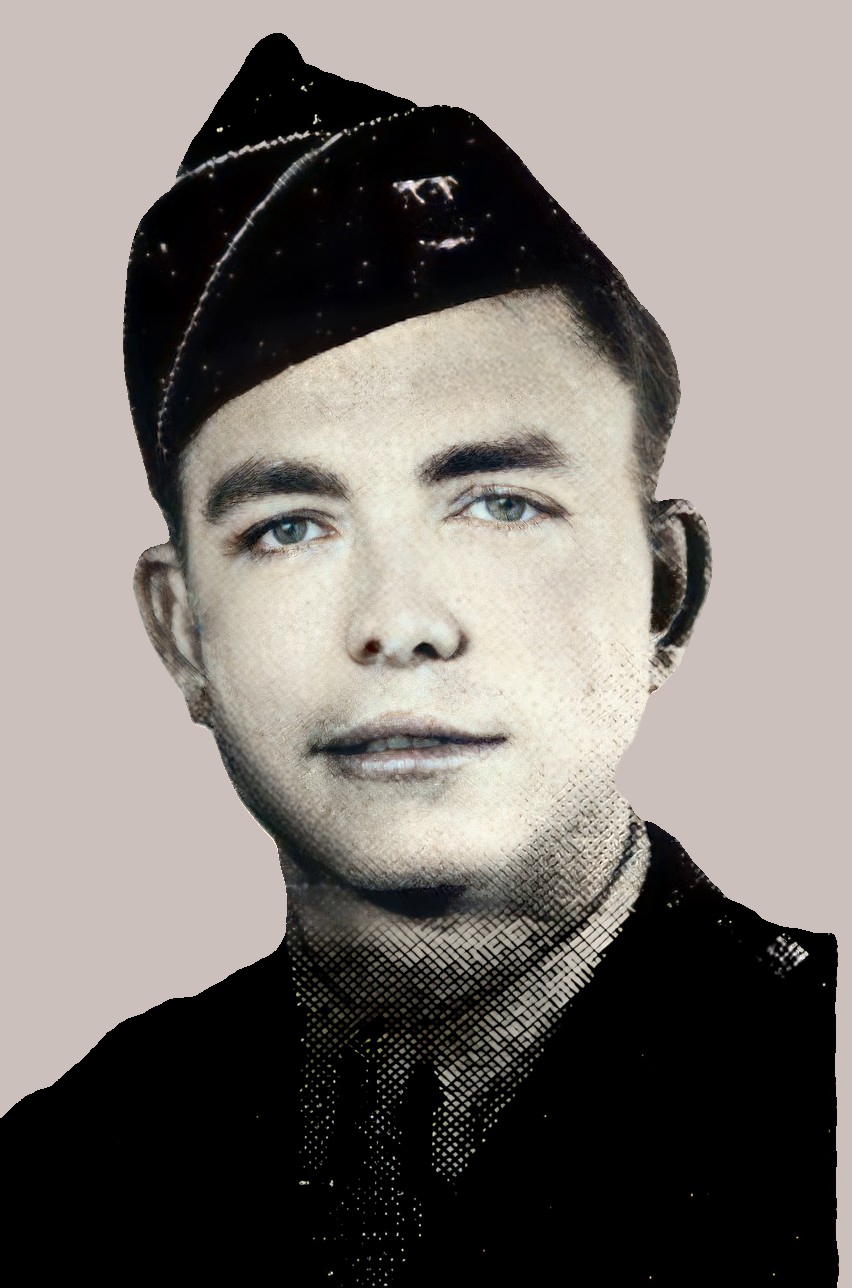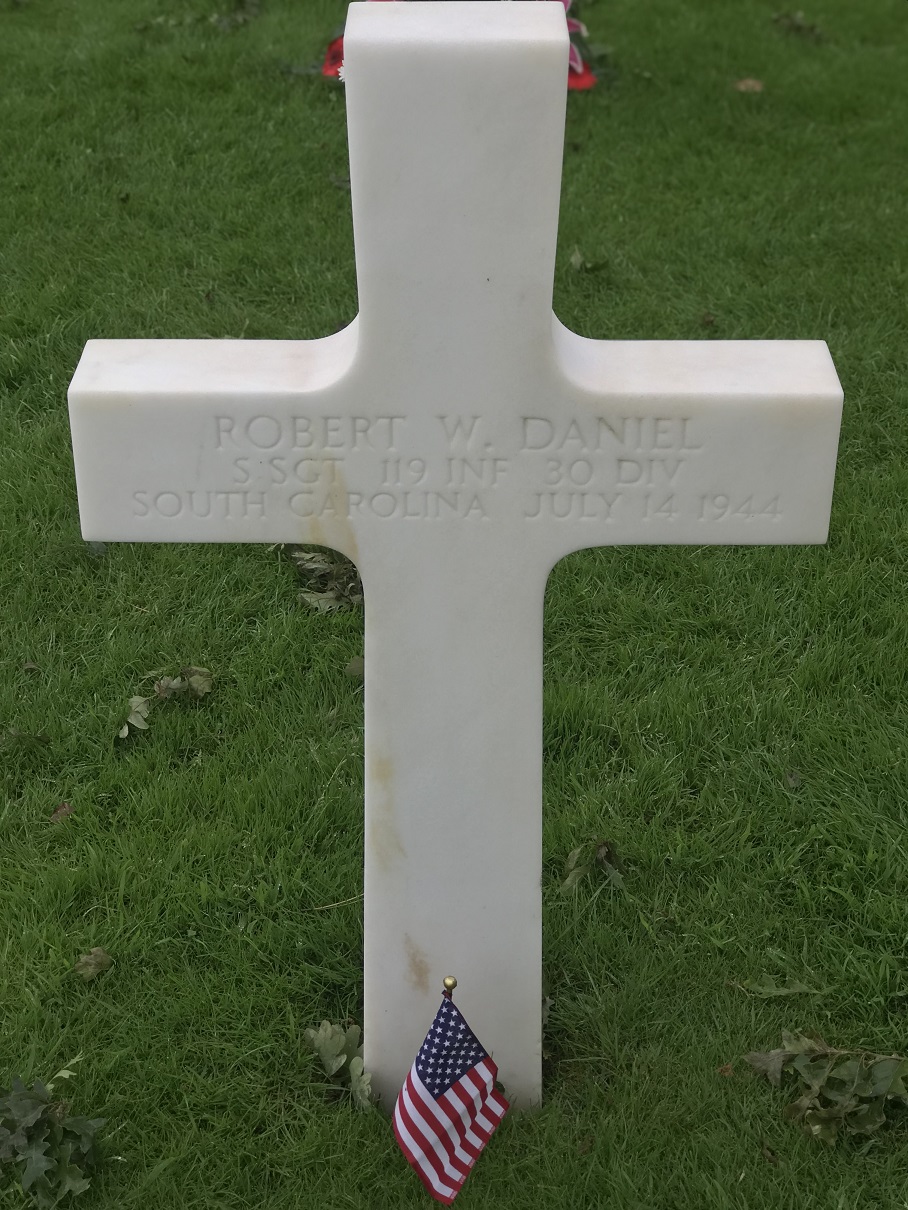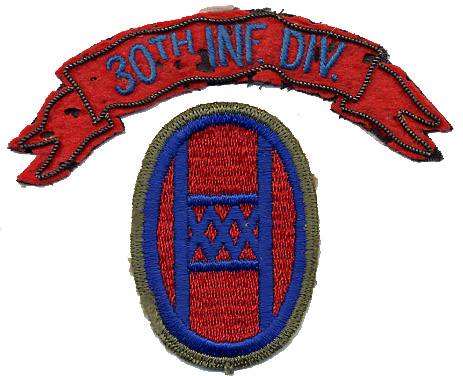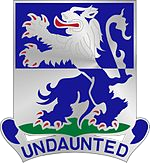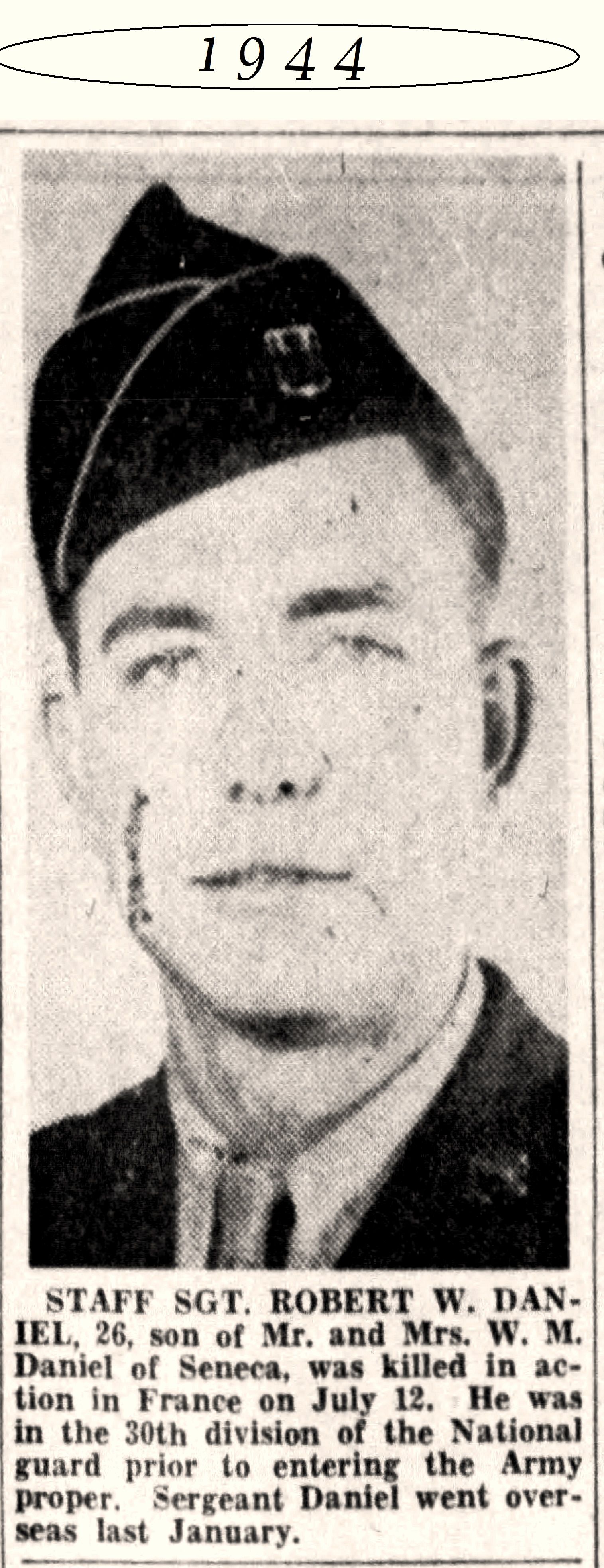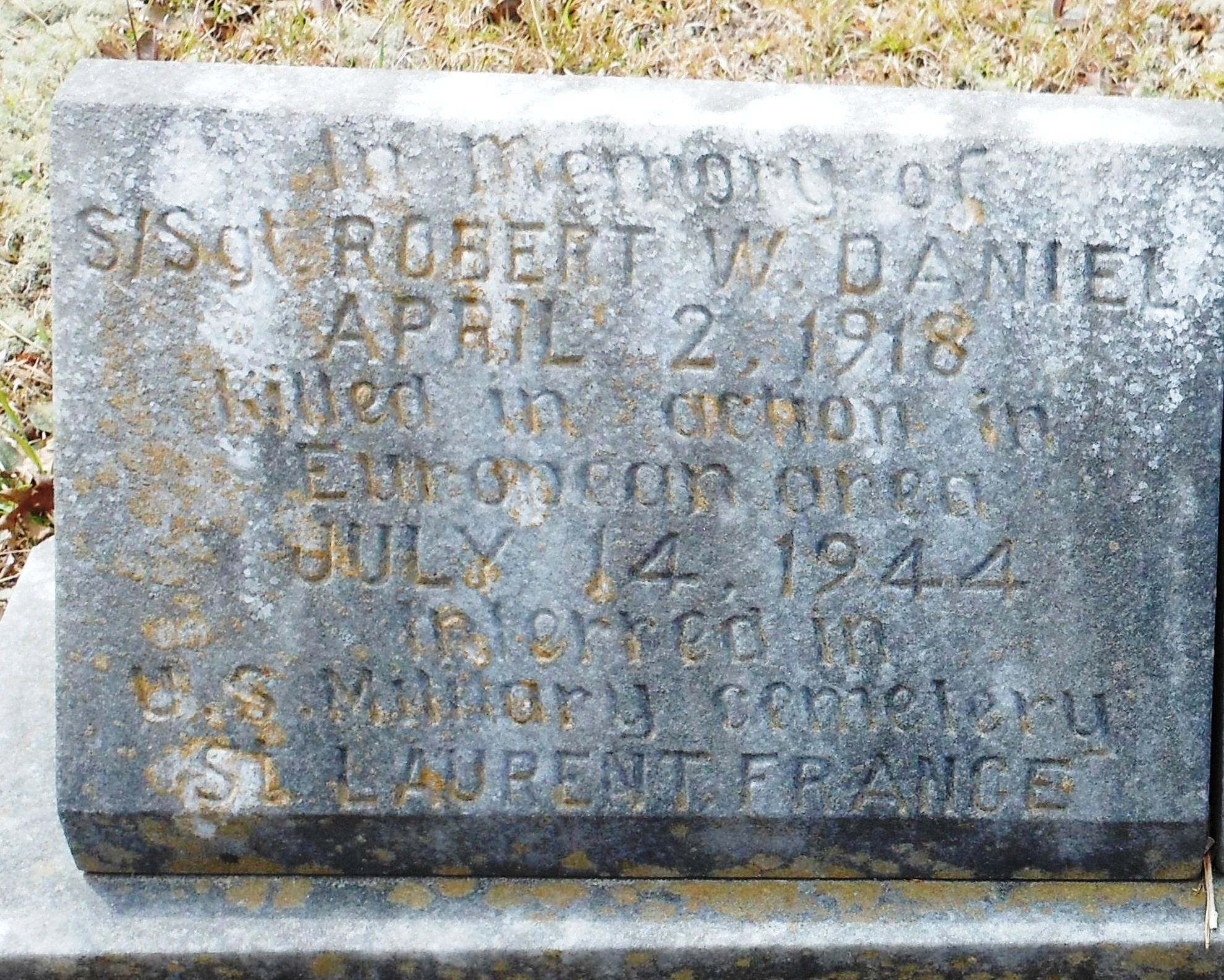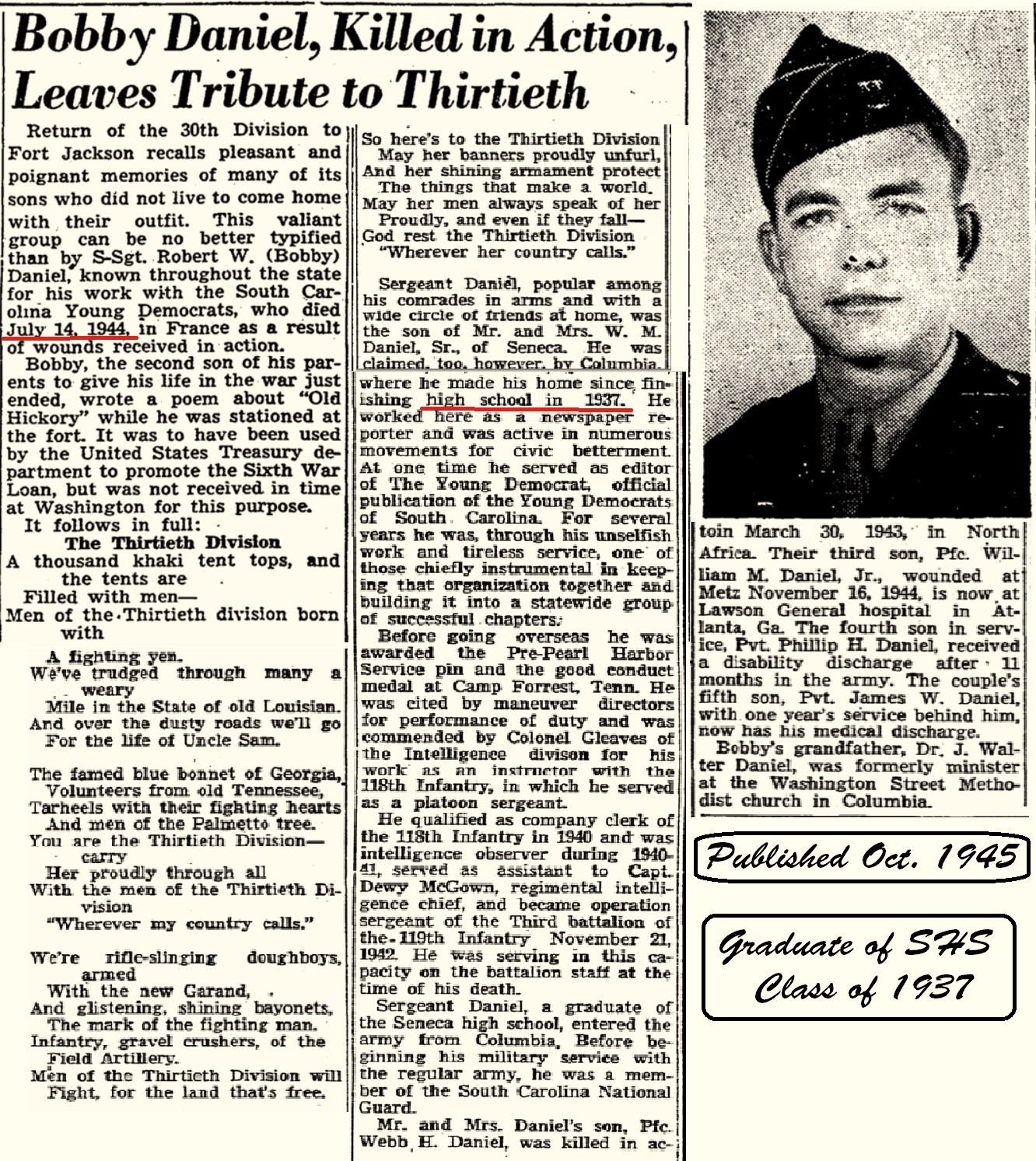|
Robert W. DANIEL
| ||||||||||||||||||||||||
|---|---|---|---|---|---|---|---|---|---|---|---|---|---|---|---|---|---|---|---|---|---|---|---|---|
|
Source : Bampa5 (Ellen Marchese)
| ||||||||||||||||||||||||
| NUMERO DE SERVICE | 20404151 | |||||||||||||||||||||||
| AGE | 26 ans | |||||||||||||||||||||||
| DATE DE NAISSANCE | 2 avril 1918 Seneca, SOUTH CAROLINA | |||||||||||||||||||||||
| ÉTAT D’ENRÔLEMENT | SOUTH CAROLINA | |||||||||||||||||||||||
| FAMILLE |
Parents : Mr. & Mrs. William M. Daniel Frères : Webb, William Jr., Phillip et James | |||||||||||||||||||||||
| GRADE | Staff Sergeant | |||||||||||||||||||||||
| FONCTION | Operation sergeant | |||||||||||||||||||||||
| PROFESSION AVANT INCORPORATION | Reporter |  | ||||||||||||||||||||||
| DATE D'INCORPORATION | 1940 Camp Forrest TENNESSEE | |||||||||||||||||||||||
| COMPANY | HQ Company | |||||||||||||||||||||||
| BATTALION | 3rd Bataillon | |||||||||||||||||||||||
| REGIMENT | 119th Infantry Regiment | |||||||||||||||||||||||
| DIVISION | 30th Infantry Division | |||||||||||||||||||||||
| ARMY | 1st Army | |||||||||||||||||||||||
| DATE DU DECES | 14 juillet 1944 |
Source : Victor Daniel | ||||||||||||||||||||||
| STATUT | KIA | |||||||||||||||||||||||
| LIEU DU DECES | ||||||||||||||||||||||||
| CIMETIERE | NORMANDY AMERICAN CEMETERY de Colleville | |||||||||||||||||||||||
| TOMBE |
| |||||||||||||||||||||||
| DECORATION |
| |||||||||||||||||||||||
|
| ||||||||||||||||||||||||
| HISTOIRE | ||||||||||||||||||||||||
|
Robert était le quatrième fils d'une fraterie de 5 frères. Le premier était nommé James né en 1909, le second William né en 1912, Phillips en 1915 et le dernier Webb en 1920. En 1937 il déménagea à Colombia après avoir terminé ses études au lycée de Seneca. Il travailla alors comme reporter et s'engagea dans beaucoup de causes civiques. Il édita même un article pour "The Young Democrat", lié au parti politique et ses soutiens en Caroline du Sud. Il y était reconnu comme un activiste de grande qualité et un membre fédérateur. Il s'engage ensuite dans la South Carolina National Guard en 1940 et fut affecté au 118th Infantry Regiment. On lui confia alors le rôle de greffier (secrétaire) de compagnie. Il fût ensuite désigné comme assistant du Captain Dewy McGawn, chef du renseignement régimentaire jusqu'à fin 1942. Le 21 Novembre de cette année il fut ré-affecté au 119th Infantry Regiment comme "operation sergeant" du 3ème bataillon. Son rôle consistait, au sein de la compagnie de commandement (HQ Co.), à assister l'officier en charge de la planification des opérations de par son expérience et les informations dont il dispose. Au cours de la formation de l'unité à Camp Forrest il fut cité et recommandé par le chef de manoeuvre et le Colonel Gleaves du renseignement divisionnaire pour la qualité du service fourni en tant que sergent adjoint de section au 118th IR. C'est pourquoi il reçut le Good Conduct Medal au cours de cette période.
Il arriva ainsi en Angleterre le 22 février 1944 avec sa division. Celle-ci fut débarquée sur Omaha Beach le 11 juin et s'engagea presque aussitôt dans la bataille des haie. Il fut blessé au combat le 14 juillet alors que la division se battait le long de la Vire entre Saint-Fromond et Pont-Hébert. Quelques heures plus tard il succomba...
Il était connu comme quelqu'un de très apprécié aussi bien par ses amis d'avant-guerre que ses camarades de combat l'ayant suivi de Camp Forrest au bocage normand. |
Source : Bampa5
| |||||||||||||||||||||||
|
Source : Frank Strickland
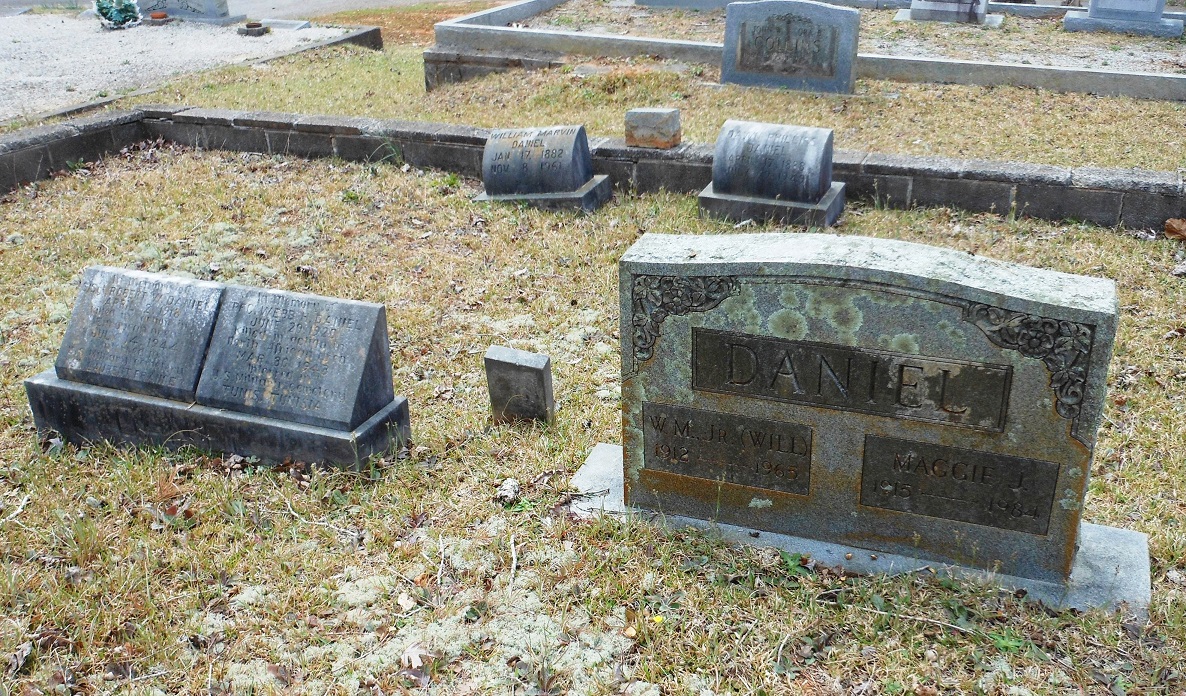 |
The Thirtieth Division A thousand khaki tent tops, and the tents are filled with men We've trudged through many a weary mile in the state of old Louisian The fame blue bonnet of Georgia, volunteers from old Tennessee, You are the Thirtieth division carry her proudly through all
We're rifle-slingning doughboys, armed with the new garand, Infantry, gravel crushers, of the field artillery. So here's to the Thirtieth division May her men always speak of her proudly, and even if they fall God rest the Thirtieth division "Wherever her country calls". | |||||||||||||||||||||||
|
Source : Bampa5
| ||||||||||||||||||||||||
Activated/Activé |
Normandy/Normandie |
| 16 Sep 1940 | Days of Combat/Jour de Combat 282 |
| Casualties/Victimes 18 446 | |
Entered Combat/Entré au combat |
|
| 11 Jun 44 Normandy | |
|
Commanding Generals/Commandants généraux Maj. Gen. Henry D. Russell (Sep 40 - Apr 42) |
Campaigns/CampagnesNormandy (6 Jun 44 - 24 Jul 44) |
PLAN DE ROUTE DE LA CAMPAGNE - CAMPAIGN ROUTE MAP |
|
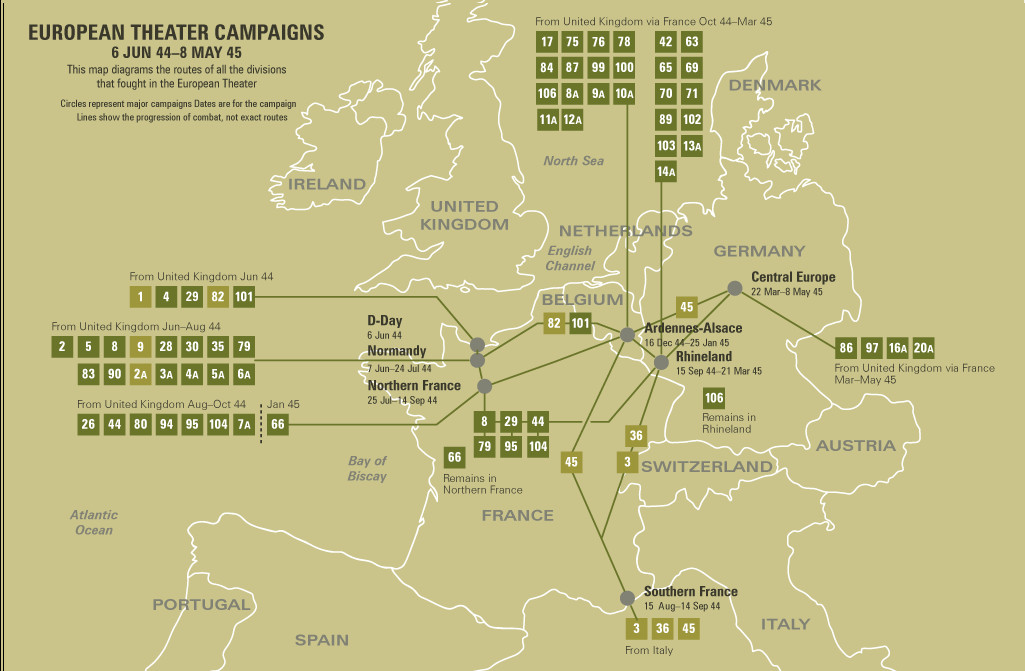 |
|
DIVISION CHRONICLEThe 30th Infantry Division arrived in England, 22 February 1944, and trained until June. It landed at Omaha Beach, Normandy, 15 June 1944, secured the Vire-et-Taute Canal, crossed the Vire River, 7 July, and, beginning on 25 July spearheaded the St. Lo break-through. The day after the Division relieved the 1st Infantry Division near Mortain on 6 August, the German drive to Avranches began. Fighting in place with all available personnel, the 30th frustrated enemy plans and broke the enemy spearhead in a week of violent struggle, 7 to 12 August. The Division drove east through Belgium, crossing the Meuse River at Vise and Liege, 10 September. Elements entered Holland on the 12th, and Maastricht fell the next day. Taking up positions along the Wurm River, the 30th launched its attack on the Siegfried Line, 2 October 1944, and succeeded in contacting the 1st Division, 16 October, and encircling Aachen. After a rest period, the Division eliminated an enemy salient northeast of Aachen, 16 November, pushed to the Inde River at Altdorf, 28 November, then moved to rest areas. On 17 December the Division rushed south to the Malmedy-Stavelot area to help block the powerful enemy drive in the Battle of the Ardennes. It launched a counteroffensive on 13 January 1945 and reached a point 2 miles south of St. Vith, 26 January, before leaving the Battle of the Bulge and moving to an assembly area near Lierneux, 27 January, and to another near Aachen to prepare for the Roer offensive. The Roer River was crossed, 23 February 1945, near Julich. The 30th moved back for training and rehabilitation, 6 March, and on 24 March made its assault crossing of the Rhine. It pursued the enemy across Germany, mopping up enemy pockets of resistance, took Hamelin, 7 April, Braunschweig on the 12th, and helped reduce Magdeburg on the 17th. The Russians were contacted at Grunewald on the Elbe River. After a short occupation period, the 30th began moving for home, arriving 19 August 1945. |
CHRONIQUE DE DIVISIONLa 30th Infantry Division arrive en Angleterre le 22 février 1944 et s'entraîne jusqu'en juin. Il débarqua à Omaha Beach, en Normandie, le 15 juin 1944, sécurisa le canal de Vire-et-Taute, traversa la Vire, le 7 juillet, et, à partir du 25 juillet, fut le fer de lance de la percée de Saint-Lo. Le lendemain de la relève de la 1re division d'infanterie près de Mortain, le 6 août, la division allemande a commencé à Avranches. Combattant avec tout le personnel disponible, le 30ème ennemi frustré projette et brise le fer de lance ennemi dans une semaine de lutte violente, du 7 au 12 août. La Division a traversé la Belgique en traversant la Meuse à Vise et Liège, le 10 septembre. Les éléments sont entrés en Hollande le 12 et Maastricht est tombé le lendemain. Prenant position le long de la rivière Wurm, le 30 a lancé son attaque sur la ligne Siegfried, le 2 octobre 1944, et a réussi à contacter la 1re Division, le 16 octobre, et à encercler Aix-la-Chapelle. Après une période de repos, la Division a éliminé un saillant ennemi au nord-est d'Aix-la-Chapelle, le 16 novembre, a été poussée sur l'Inde à Altdorf, le 28 novembre, puis s'est déplacée vers des aires de repos. Le 17 décembre, la Division s'est précipitée vers le sud, dans la région de Malmedy-Stavelot, pour bloquer la puissante campagne ennemie de la bataille des Ardennes. Il lança une contre-offensive le 13 janvier 1945 et atteignit un point situé à 2 milles au sud de Saint-Vith, le 26 janvier, avant de quitter la bataille des Ardennes et de se rendre dans une zone de rassemblement près de Lierneux le 27 janvier. l'offensive Roer. La rivière Roer fut traversée, le 23 février 1945, près de Julich. Le 30 mars est revenu à l'entraînement et à la réhabilitation, le 6 mars, et le 24 mars, il a effectué son assaut en traversant le Rhin. Il a poursuivi l'ennemi à travers l'Allemagne, nettoyé les poches de résistance ennemies, pris Hamelin, le 7 avril, Braunschweig le 12, et aidé à réduire Magdeburg le 17. Les Russes ont été contactés à Grunewald sur l'Elbe. Après une courte période d'occupation, le 30 a commencé à déménager pour la maison, arrivant le 19 août 1945. |
| SOURCE INFORMATION & PHOTO | Armydivs.squarespace.com |
|---|
| SOURCE INFORMATION & SOURCE PHOTO | Victor Daniel - Findagrave.com - Findagrave.com - Abmc.gov |
|---|---|
| PROGRAMMEURS | Eric, Henri, Garrett, Clive, Frédéric & Renaud |




















